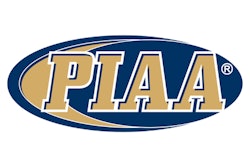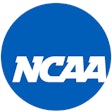
The Division I Football Oversight Committee is recommending a comprehensive recruiting model for the sport to the Division I Council. The council is scheduled to meet April 12-13.
If approved, the changes would become legislation and, except for a Football Championship Subdivision on-campus evaluation recommendation, take effect Aug. 1. The FCS on-campus recommendation would take effect June 1.
The football comprehensive recruiting model would modify the FBS and FCS recruiting calendars; adjust the first date to send recruiting materials, electronic correspondence and telephone calls; permit in-person off-campus contacts with high school juniors; reduce off-campus recruiting activities; and, in the Football Championship Subdivision, modify on-campus evaluations.
Jean Gee, the chair of the Comprehensive Recruiting Review Subcommittee and senior associate athletics director for student affairs and compliance at Montana, said the group has gathered responses from throughout the Division I football community for over a year with three specific goals in mind.
"We wanted to maintain and strengthen the scholastic recruiting model for football, prioritize coach work/life balance and attention to current student-athletes and rules that are enforceable and monitorable, as well as creating transparency in the recruiting process," Gee said. "The subcommittee developed these recommendations through regular and numerous meetings, review of membership feedback from a variety of constituents and collaboration with FBS and FCS conferences."
Modifications to the recruiting calendar in both the Football Bowl Subdivision and FCS include:
- Schools would have 33 evaluation days (42 for U.S. service academies) during the months of September, October and November, selected at the discretion of the school. Only authorized off-campus recruiters could visit a prospective student-athlete's educational institution and on only one calendar day during this period.
- The Monday of the week that includes the initial date for the regular signing period of the National Letter of Intent through the first Sunday in March would be a dead period.
- For U.S. service academies, the Friday immediately after the initial date for the regular signing period of the National Letter of Intent through the first Sunday in March would be a quiet period.
- At the discretion of the membership school, coaches would have 140 recruiting person days (180 for U.S. service academies) from April 15 through the Saturday preceding Memorial Day for a contact period.
- The Sunday before Memorial Day and the next three calendar days would be a dead period.
The recruiting package also would standardize the date of the first opportunity for schools to initiate a telephone call to an individual (or their family members) or to send recruiting materials and electronic correspondence. June 15 at the conclusion of a prospect's sophomore year of high school would be the first date any of those activities could occur. The recommendation also eliminates the restrictions on the number of telephone calls an institution may initiate. Once a school is permitted to initiate a telephone call to an individual, there would not be a limit on the number of calls the school may initiate to that individual.
In addition to the recommendations for the recruiting calendar and the first date for calling or sending recruiting materials or electronic correspondence, the model also changes the first opportunity for off-campus contact with prospects:
- Off-campus recruiting contacts could not be made with an individual (or the individual's family members) before Jan. 1 of the individual's junior year in high school.
- A school would be limited to eight off-campus, in-person contacts with a prospective student-athlete and the prospect's family members for the prospect's junior and senior years combined.
- Contact could occur only one time per week.
- Contacts that occur during the prospective student-athlete's junior year in high school could occur only at the prospective student-athlete's educational institution.
- Schools would be allowed up to two off-campus contacts during the January contact period of a prospective student-athlete's junior year of high school. A school would also be allowed one off-campus contact during the spring contact period of a prospective student-athlete's junior year of high school.
- The head football coach could make only one off-campus contact during the prospective student-athlete's junior year and one off-campus contact during the prospective student-athlete's senior year in high school with a prospect or their family members. The model would not change the off-campus recruiting prohibition of FBS head coaches during the spring contact period.
The model includes one recommendation that is unique to FCS — the opportunity to conduct an on-campus evaluation with a prospective student-athlete, provided specific conditions are met:
- The prospect is a high school junior, high school senior, two-year college transfer or four-year college transfer.
- The on-campus evaluation must be conducted during an unofficial visit after the prospect's scholastic season has concluded.
- The on-campus evaluation must occur during the month of June.
- Before participating in an on-campus evaluation, a prospect is required to undergo a medical examination or evaluation administered or supervised by a family or team physician. A nurse practitioner whose state medical licensure allows for health care practice independent of physician supervision may complete the medical examination without supervision by a physician. The examination or evaluation should include a sickle cell solubility test unless documented results of a prior test are provided to the school.
- The medical examination or evaluation must be administered either within six months before participation in the on-campus evaluation or within six months before the prospective student-athlete's initial participation in practice, competition or out-of-season conditioning activities during the immediately completed season. In addition, the medical examination or evaluation may be conducted by a school's regular team physician or other designated physician as a part of the on-campus evaluation.
- The on-campus evaluation activities cannot exceed one hour; all activities must be noncontact; no protective equipment can be worn by the prospect; and only authorized off-campus recruiters may conduct the on-campus evaluation.
- Individuals whose responsibilities include video recording may be present at, but not conduct, the on-campus evaluation.
To provide FCS schools the opportunity to conduct on-campus evaluations this June, the Football Oversight Committee is recommending this part of the model be effective June 1.
"The model provides coaches additional time on campus to focus on the development of current student-athletes," said Patty Viverito, vice chair of the Division I Football Oversight Committee and commissioner of the Missouri Valley Football Conference. "This was developed with input from coaches, student-athletes and campus and conference football administrators."
Like Viverito, Isaac Vance, a graduate football student-athlete at Kent State, participated in the process as a member of the Football Oversight Committee and its Comprehensive Recruiting Review Subcommittee.
"This new recruiting model recommendation will benefit all current and prospective student-athletes, as well as coaches," Vance said. "These recommendations were developed by the FOC through countless meetings, surveys and incredible collaboration that included the Division I Football Oversight Student-Athlete Connection Group."
The Football Oversight Committee will continue to discuss and evaluate the FBS and FCS recruiting rules, even if the recommended model is adopted by the NCAA Division I Council next week.
"As we are in a time of significant change, it is important to continue to update our recruiting model to adjust to this new landscape," said Todd Berry, the executive director of the American Football Coaches Association and ex officio member of the Division I Football Oversight Committee. "This model is reflective of months of collaboration between the AFCA, the NCAA and the NCAA membership. These are the beginning steps to modernize our model with continued understanding that more will need to be done."




































